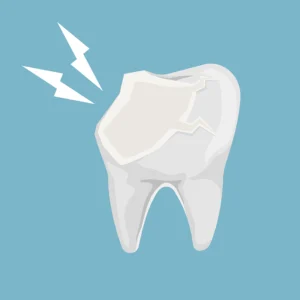Table of Contents
Plaque, or dental plaque, is a sticky, colorless biofilm of bacteria that continuously forms on your teeth. While it might seem harmless, plaque is a primary cause of dental issues, including cavities and gum disease. Knowing what plaque is, how it develops, and effective ways to remove it are essential for maintaining optimal oral health. At Hardin Family Dental, we’re committed to helping you manage plaque and keep your smile bright and healthy.
What Is Plaque? The Science Behind Its Formation
Plaque forms naturally as bacteria in your mouth feed on sugars and starches left on your teeth. Bacteria such as Streptococcus mutans and Lactobacillus metabolize these carbohydrates and release acids that erode your tooth enamel, increasing the risk of cavities. Over time, dental plaque hardens into tartar, which can only be removed by a dental professional.
The Role of Diet in Plaque Formation
Your diet plays a significant role in plaque development. Sugary and starchy foods fuel plaque-producing bacteria, heightening the risk of cavities. In contrast, fiber-rich foods like fruits and vegetables stimulate saliva production, which naturally cleanses your teeth. Dairy products also help by strengthening enamel and neutralizing harmful acids.
How Plaque Leads to Tooth Decay
If left untreated, plaque acids erode tooth enamel, eventually leading to tooth decay. Untreated cavities can deepen, causing pain, infection, and even tooth loss if ignored. Understanding what plaque is and its effects on your teeth is crucial to preventing these serious complications.
Plaque and Gum Disease: A Dangerous Connection
Plaque affects not only your teeth but also your gums. When plaque hardens into tartar, it irritates the gums and causes gingivitis, the early stage of gum disease. Symptoms include redness, swelling, and bleeding. If untreated, gingivitis can progress to periodontitis, a severe condition that may lead to tooth loss and bone damage.
How to Get Rid of Plaque: Essential Oral Hygiene Tips
Preventing plaque is easier than treating its consequences. Here’s how to keep plaque at bay:
- Brush Twice Daily: Use fluoride toothpaste and a soft-bristled toothbrush, brushing for at least two minutes to thoroughly clean all tooth surfaces.
- Floss Daily: Flossing removes plaque between teeth and below the gumline, areas your toothbrush can’t reach.
- Use Mouthwash: An antibacterial mouthwash helps reduce plaque-causing bacteria.
- Schedule Regular Dental Visits: Professional cleanings at Hardin Family Dental can remove tartar and help prevent gum disease.
The Importance of Diet in Preventing Dental Plaque
Limiting sugary and starchy foods reduces plaque formation. Drinking water after meals washes away food particles, and chewing sugar-free gum with xylitol stimulates saliva, neutralizing acids that contribute to plaque buildup.
Regular Dental Checkups: Your Best Defense Against Plaque
At Hardin Family Dental, we recommend regular checkups and cleanings to keep dental plaque in check. Our team can remove tartar, identify early signs of dental issues, and offer personalized tips for maintaining your oral health.
Understanding what plaque is and how to get rid of it allows you to take control of your oral health. Begin your journey to a healthier, plaque-free smile with Hardin Family Dental!



